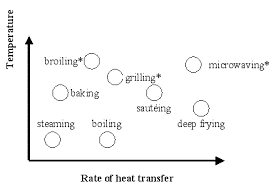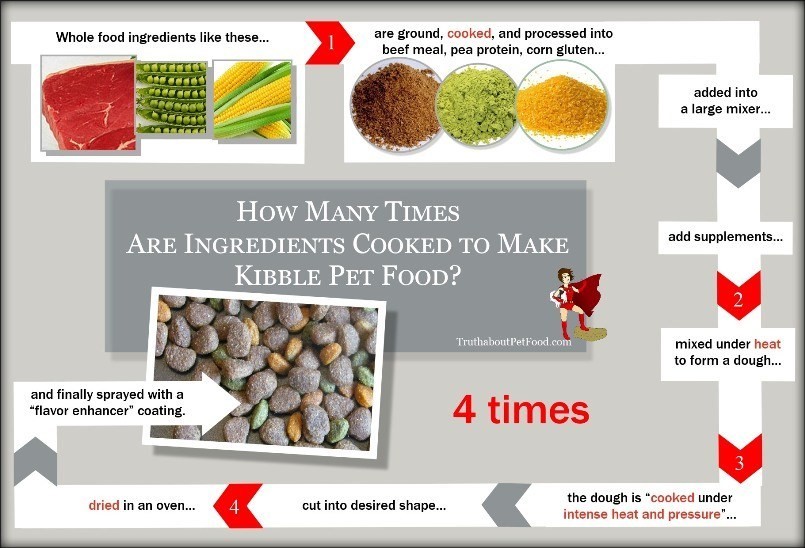How Heat Affects Food
Posted by Jennifer Carter on Jul 9th 2019
During the heating process or the “cooking” of food, a complex series of physical and chemical changes take place. These changes vary according to the heating method and time exposed, but may ultimately include changes in nutrient composition, fat content, moisture, flavor, smell, texture, and color. The longer the food is heated, and the higher the temperature, the greater the nutrient loss. When we look at commercially prepared dog food or even home cooking as preparation, the heat applied during the extrusion process, grilling or microwaving contribute to the reduction in nutritional value most of the time.

Protein goes through certain physical and chemical changes when it is heated and cooked (pg 88, SACN) When the proteins in food are heated, they coagulate. An example of this can be observed in the proteins found in eggs which become denatured and coagulate during the heating process. The heat disrupts the hydrogen bonds and non-polar hydrophobic interactions. The bonds are disrupted by increasing the kinetic energy and causing the molecules to vibrate so rapidly and violently. Researchers have observed that single amino acid digestibilities, especially for aspartic acid and cysteine, which are known to be heat-sensitive, revealed a disproportionate reduction when tested in the commercially processed food compared to when tested alone. Protein that is exposed to hot temperatures, shrinks and loses moisture. This usually occurs at temperatures between 160 and 185 degrees Fahrenheit. When animal sources of protein are cooked slowly, any connective tissues present in the meat are likely to dissolve. Heat does not destroy the protein in food, but it may reduce the overall content.
According to a 2008 report by the Animal Nutrition Group at Wageningen University in the Netherlands, the extrusion process primarily destroys vitamin A, vitamin E and the B-group vitamins in dry food ingredient mixtures. Thiamin, a B vitamin is one of the least stable vitamins and reported retentions are known to decrease from 90 percent to about 30 percent after heating. There are two possible changes that can occur when carbohydrates are heated. Caramelization occurs when the sugars in the carbohydrates are browned. An example of this can be observed when bread turns golden brown on top. Gelatinization occurs when the starches in carbohydrates absorb water and begin to swell (pg 68, SACN). Heat impacts and destroys the viability of vitamins and phytonutrients in fruits and vegetable. Heat causes the breakdown of the cell membrane structure in vegetables, which releases gas and allows us to see the bright green color emitting from chlorophyll.
So how does heat affect dry dog food’s nutrient value? The enemies of dry pet food are time, heat, moisture and air. Dry food loses nutrient value over time and can easily go rancid or grow pathogens if not stored properly. Dry food is “fast food” for pets, promoting obesity and chronic disease, and is not an ideal food choice for dogs. A fresh, healthy balanced, species-appropriate and balanced diet is a better choice for your dog’s health.

In conclusion, the way you prepare and cook a food plays an important role in the food’s nutrient density, such as the number of antioxidants, vitamins, minerals, and fiber the food can offer. The number of nutrients lost during exposure to heat will vary depending on the characteristics of the food, like ripeness, preparation, and cooking methods.
Sources:
https://academic.oup.com/jn/article/136/7/1998S/46...
Q.D. Tran, 2008. Extrusion Processing: Effects on Dry Canine Diets


